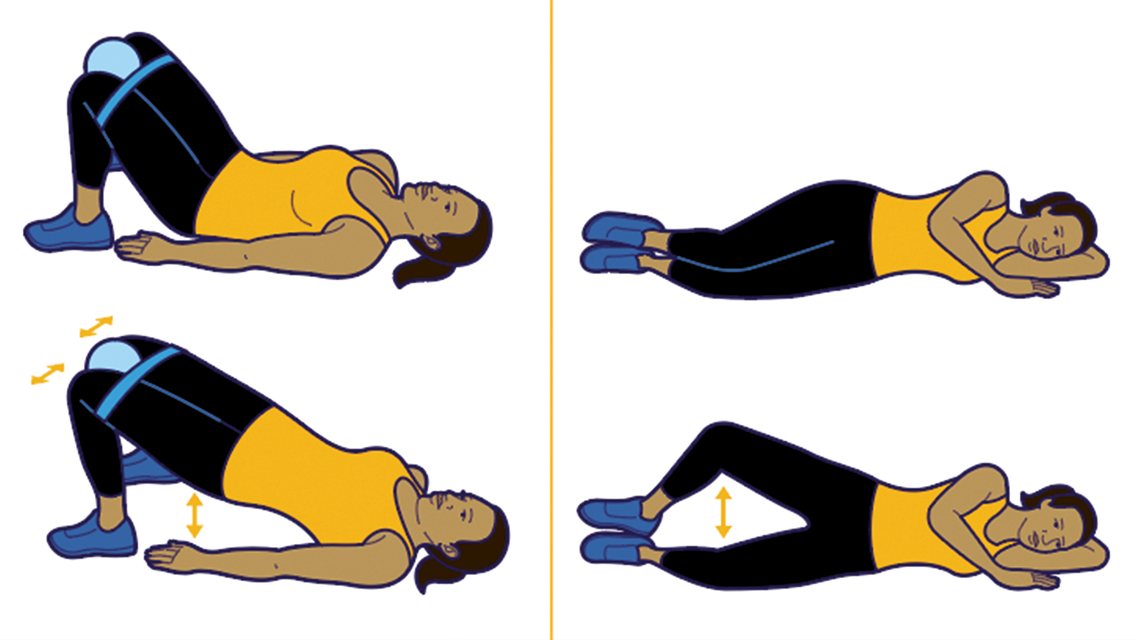The pelvic floor is where your abdominals and legs converge, and where ground-reaction forces are absorbed with each step you take, says Preil. It’s a group of muscles that form a sort of hammock or sling. Sitting at the bottom of the core (which includes the abdominal, back, and diaphragm muscles), these muscles are supported by bones, connective tissue, and fascia.
Muscles of the Pelvic Floor
The levator ani forms the bulk of your pelvic-floor muscles. It’s a funnel-shaped structure that supports bowel, bladder, and sexual function and keeps your pelvic organs in place. It wraps around the entirety of your pelvis, and it forms from the confluence of three separate muscle components:
- The pubococcygeus runs from the pubic bone to the center of the perineum. It controls the flow of urine, aids in ejaculation, and helps position the fetus’s head during childbirth.
- The puborectalis forms a sling around the rectum and assists with defecation.
- The iliococcygeus is a thin sheet of muscle that spans the pelvic canal and connects to the sacrum and coccyx. It provides a secure anchor point for the pelvic floor.
- The coccygeus is a smaller, triangular-shaped muscle located toward the back of your pelvis that helps support the pelvic organs and, with the levator ani, comprises the pelvic diaphragm.
(Anatomically correct diagrams of male and female pelvic floor muscles are available through the Mayo Clinic.)
Bones of the Pelvis
- The coccyx, also known as your tailbone, is a small triangular bone at the base of your spine. It serves as an attachment site for pelvic-floor muscles.
- The sacrum is located just above the coccyx. This shield-shaped bone acts as a muscle attachment site and helps stabilize the pelvis.
- The hipbones are located on either side of your pelvis and serve as another attachment site for pelvic-floor muscles. Each hipbone consists of three separate bones: the ilium, ischium, and pubic bone.
Pelvic-floor health is an important, yet often overlooked, component of overall well-being. Discover how to keep this group of muscles strong and healthy by learning more at “Your Fit and Functional Pelvic Floor,” from which this article was excerpted.





This Post Has 0 Comments